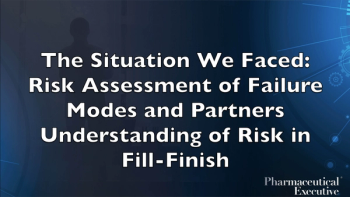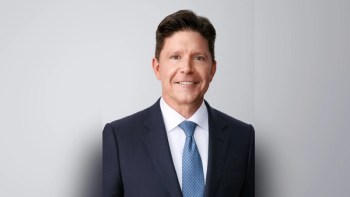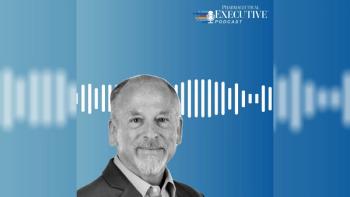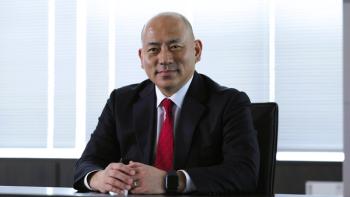
Regenerative Medicine Companies Successfully Advance Stem Cell Therapies
In this Q&A, Athersys CEO, Gil Van Bokkelen, PhD, discusses his perspective on the recent advancements in stem cell therapies.
Stem cell therapy development is a new area where several companies are emerging with promising results utilizing stem cell therapies. Some companies have failed, whereas others, such as Athersys, are succeeding. Gil Van Bokkelen, PhD, CEO of Athersys, will discuss his perspective on the recent advancements in stem cell therapies and their multiple application on a variety of therapeutic areas. In addition to joining the Athersys family, Van Bokkelen serves as the Chairman of the Board of Governors for the National Center for Regenerative Medicine. He also served as the Chairman of the Alliance for Regenerative Medicine from 2010 through 2012, and he served ex officio from 2013 to 2014. He has also served on several other boards, including the Biotechnology Industry Organization’s board of directors. Van Bokkelen has extensive leadership experience and a strong scientific and financial knowledge of the biotechnology industry, including the field of regenerative medicine and stem cell research.
Moe Alsumidaie: What led you to work in the field of stem cell research and regenerative medicine?
Gil Van Bokkelen: Athersys didn't start with a focus on the field of cell therapy and regenerative medicine.
Regenerative medicine wasn't even a field yet. We had developed some powerful genomics technologies that led to multiple partnerships with major pharma companies. These technologies attracted the attention of a group that had done some pioneering work in the stem cell field-they had discovered a novel cell type that had some exciting properties.
This connection led to a collaboration to explore the unique characteristics of these cells, which can promote healing in multiple ways, exhibit robust growth properties and can also be administered like Type O blood, without requiring tissue matching or immune suppression. These characteristics mean that the technology could be scaled robustly.
However, we didn’t know yet whether or where the technology might be relevant therapeutically. So, we collaborated with independent labs and research teams to help us figure out potential therapeutic areas of relevance for our technology. Since then, we've discovered that MultiStem has profound significance in areas of critical care medicine such as stroke and, as we just recently announced, acute respiratory distress syndrome (ARDS), and other areas we have been working in with leading independent research teams.
MA: What results came out of the Phase II MultiStem study for stroke?
GVB: The key finding that we observed was that if we treated stroke patients with Intravenous (IV) administration of MultiStem within 36 hours or less, there was evidence of robust recovery and that patients continued to improve over time. One of the main things we clinically evaluated was something called Excellent Outcome, which is essentially the proportion of patients that achieved full recovery. In Excellent Outcome, patients have to demonstrate an excellent or normal score in each of three different clinical assessments: the NIH Stroke Scale (NIHSS), the Modified Rankin Scale, and the Barthel Index for Activities of Daily Living (ADL), which indicates if the patient can function without assistance. In practical terms, this means the patients recovered to the level of independence and quality of life they enjoyed before the stroke.
We also saw significant evidence of improvement among other clinical parameters, which eventually led to a series of critical regulatory designations from the FDA, including both Fast Track and Regenerative Medicine Advanced Therapy (RMAT), as well as similar designations from international regulators.
Another observation from the trial was the importance of developing and validating a simple, easy-to-prepare version of the product-something that we refer to as a genuine “off the shelf” product. Essentially, MultiStem consists of cells that are kept in frozen form in a vial until needed, and then the product is thawed and administered to the patient using a simple and straightforward process.
MA: Before we dive into the science, how does your technology differ from competitors that are targeting stroke with stem cells?
GVB: Our fundamental approach relies on treating patients within the first 36 hours after a stroke has occurred, which we have shown is a critical window following a stroke. MultiStem is administered intravenously, using a very simple and straightforward approach. We don’t need to alter the cells that comprise MultiStem genetically, and we have developed proprietary methods and technologies to manufacturing the product in a scalable manner. The key features are that the cells stimulate tissue repair and healing through multiple, distinct mechanisms of action, have robust scalability, and are easy to prepare and deliver using a simple intravenous administration. Like a traditional biologic, the cells are then cleared from the body over time.
SanBio, our competitor, has been focused on using cell therapy for the treatment of patients with chronic stroke damage, using genetically modified bone marrow-derived cells that are then surgically implanted into the brain, six months to seven years after a stroke has occurred. They are injecting these modified cells right into the brain hoping that they can help stimulate recovery. While they saw some promising signs of recovery in a Phase II study on traumatic brain injury patients, they followed that up with some disappointing results in patients that had suffered chronic stroke damage.
However, it’s important to recognize that there are several fundamental differences in these two approaches, from a technological perspective and a timing perspective. First, we are using a different cell type that has different therapeutic properties. Second, we administer our product intravenously, without the need for surgery. Third, and perhaps most importantly, we're intervening within 36 hours after the stroke has occurred, whereas SanBio was focused on trying to help correct damage that had happened months to years beforehand, which is a lot more challenging. Their approach is not suitable for treating acute stroke.
Our data shows that if we administer MultiStem within the relevant time frame, meaning within that 36-hour window, we can blunt or neutralize the hyperinflammatory cascade that causes a lot of the long-term damage, and promote better recovery. Essentially, MultiStem is stopping the counter-productive hyper-inflammatory cascade before it starts, while also stimulating fundamental reparative mechanisms. Our clinical data shows that this can improve things pretty dramatically. While the long-standing stroke dogma is that there is no additional improvement after 90 days, we saw that the patients who received MultiStem within the 36-hour window continued to improve through the one year clinical follow-up, and many of them experienced a full recovery.
MA:Are there any side effects to the hypo-inflammatory profile that would impact the recovery?
GVB: We’ve seen very consistent tolerability and safety profile in the clinical studies that we have run. We conducted many studies preclinically before we ever got to the clinical stage, and many of those were performed with the guidance and input of the FDA, and so we were confident that it was a well-characterized and safe product.
MA: Mechanistically, how does MultiStem work?
GVB: In contrast to a traditional drug that is designed to do one specific thing, MultiStem is essentially a living drug that does multiple things to help recovery and healing. For example, a few years ago we discovered that shortly after a stroke has occurred, your brain starts telling the immune system that it needs help by sending signals directly to the spleen. The immune cells in the spleen then become activated and inflammatory, leave the spleen and enter the circulatory system, and then head to the brain where they create a hostile, inflammatory environment, which kills off a lot of additional brain tissue that could be saved. All of this happens within the first couple of days following the stroke. Also, these activated immune cells lay down a boundary of scar tissue that contains a specific substance called glycosaminoglycans or GAGs for short, which is essentially the biological equivalent of a brick wall. When neurons encounter inflammation and GAGs they physically pull back from that area in a process referred to as “neuronal die-back.” The GAGs act like a boundary that prevents the neurons from ever re-entering the region-impeding or preventing patient recovery and healing.
Usually, when immune cells leave the spleen and travel towards the region of damage to exert their hyper-inflammatory cascade, you end up with a lot of collateral damage and an empty spleen. What we predicted, and saw in our Phase II clinical trial, was that if we stopped the hyper-inflammatory cascade from happening, it’s like keeping all the horses in the barn, so that they are ready to defend the body against opportunistic infections or other problems. Moreover, importantly, patients that have a stroke, particularly if they are elderly, are very susceptible to secondary infection and other immune-related complications. We predicted that we should see less complications when we treated patients with MultiStem, and that's precisely what we saw.
So, there are lots of reasons to be excited about the Phase II data and our ongoing Phase III and registrational trials. Our partner in Japan is running a pivotal study, which gives us a lot of confidence and optimism that we might very well be on the cusp of changing stroke care as we know it.
MA: You just recently announced results from another challenging area, treating patients with Acute Respiratory Distress Syndrome (ARDS). What did that study show?
GVB: ARDS is a severe condition where patients experience severe inflammation and fluid build-up in their lungs, so their lung function is severely compromised. These patients aren’t getting enough oxygen, and so they have to be placed on a ventilator and are cared for in the ICU. Our recently announced clinical trial results from our randomized, double-blind placebo-controlled study showed that when patients with ARDS were treated with MultiStem, there was a meaningful reduction in mortality, and patients also showed increased days off the ventilator and a higher number of ICU-free days than patients being treated under the standard of care. The data also suggests that the treatment effect was more significant in the more severely ill patients.
People in the ARDS field have found these results to be very exciting. Our partner in Japan, Healios, is already launching an ARDS clinical trial there under the new accelerated regulatory framework for regenerative medicine therapies, so we are in a really good position to advance science.
Moe Alsumidaie, MBA, MSF is Chief Data Scientist at Annex Clinical.
Newsletter
Lead with insight with the Pharmaceutical Executive newsletter, featuring strategic analysis, leadership trends, and market intelligence for biopharma decision-makers.




